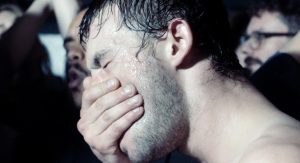
While most clubbing films centre contextless euphoria, 120 BPM, Millennium Mambo and Aftersun remind us that the dance floor is both a personal and political space.
While there are plenty of films with iconic dance floor sequences, cinema’s engagement with (and representation of) club culture is slippery and difficult to summarise. Films as diverse as Young Soul Rebels, Party Girl, Clubbed to Death, Sorted and Sauvage each grapple with it in their own way, focusing on various real and imagined club communities, genres and dance floors across different time periods.
But despite this rich representation, films frequently considered nightlife classics all too often present a clichéd idea of clubbing as a collection of frothy and transient youth subcultures. Typically conservative, this image of the nightclub is loud, hedonistic and full of straight, white 20-somethings taking drugs and (sometimes) dancing. Clubbing is defined as a youthfully impulsive pastime to fill the gap between adolescence and the inevitable destination of career and family. The only other alternatives these films present are equally inevitable substance abuse issues, mental health crises or organised crime.
There are many editorial lists cataloguing these films. The criteria for inclusion usually relates to a given film’s ability to convincingly capture chemically induced dance floor euphoria. If it can convey something of clubbing’s countercultural coolness in the process, even better. But as anyone with even a passing interest in dance music and films already knows, the dance floor is home to emotional resonances that extend beyond euphoria, and the cinema is rarely just a space to showcase faithful transcriptions of reality.
The turn of the century was prime time for films in this zone. While genre-focused thrillers like Go and Sorted used clubs as a backdrop to formulate fun and twisty thrillers, films like Groove and Human Traffic dramatised raving in a more realistic, drug-centred fashion than ever before. These films were overtly about club culture, explaining how and why people attend parties, what music they listen to and, crucially, what feelings people have under the influence.
For anyone with even a glimmer of the nostalgia impulse, Groove and Human Traffic are hard to hate. Both come with wonderful soundtracks and dance floor sequences that ooze visual flair through familiar strobe flashes and slow-mo close-ups of protagonists’ peak-time highs. (How angry can you really be at a film that culminates in John Digweed finally turning up and dropping “Heaven Scent”?)
But at the narrative level, it’s their respective obsessions with conveying pure, blissed-out euphoria that feel clichéd and uncomplicated in retrospect. The politics of their dance floors are a little too smoothed-out and decontextualised to capture much other than anxious anticipation and ecstatic revelation. Each film culminates in a rote rom-com style conclusion, as our straight white male protagonists finally get the girl of their dreams. After that night, nothing was ever the same again.
In fairness, neither film positions itself as an interrogation of oppression or the identity politics of their times, overtly wanting to be about the men at the centre of their stories and how clubbing impacts their lives. But these films helped set a specific expectation for films depicting modern nightlife—that dance floors are, largely, sites of small “s” spiritual communion and contextless transcendental euphoria.
The following three films each do something to undo this expectation. Operating outside of the conventions of more traditional club films, they remind us that the dance floor is a cultural space that can be personally and politically meaningful. Each film portrays aspects of club culture that most films and TV shows pass over.

120 BPM is a French drama, released in 2017, centred around a group of HIV/AIDS activists associated with ACT UP Paris.
120 BPM (Robin Campillo, 2017)
French drama 120 BPM (Beats per Minute) stands in direct opposition to the usual simplistic and escapist interpretation of the PLUR ethos in clubbing films. The film follows a central cast of queer, HIV+ characters deep within AIDS activism in early ’90s Paris. A member of Act UP-Paris in his youth, writer and director Robin Campillo folds his personal experiences of activism into a detailed dramatisation of a real-world political crisis.
A series of dance floor sequences recurs throughout the film, moving to and from more naturalistic scenes. These sequences abstractly overlap with protest actions, intimate sexual encounters and scientific presentations that detail the side effects of HIV medication. The nightclub space in 120 BPM blurs the line between sites of political activism, eroticism and the dance floor, suggesting that a separation between them is simplistic and inaccurate.
While the film’s political and historical context is clear, its construction of the dance floor is much murkier. It focuses on the bodies of the dancers and their interactions with one another, paying little attention to the venue layout, infrastructure or the figure of the DJ. The intermittent nature of the clubbing scenes gives them an uncanny, quasi-magical quality. Its atmosphere is never fully real nor entirely metaphorical and, combined with the measured, intimate relationships of its central characters, these sequences evoke a potent feeling of queer community onscreen. They draw clear physical links between the virus, oppression, protest, dance and the human body.

Millenium Mambo is a 2001 Taiwanese romantic drama film, in which clubbing sequences construct a dance floor punctuated by drunken fights, discomfiting confrontation and masculine rivalry.
Millennium Mambo (Hou Hsiao-Hsien, 2001)
Hou Hsiao-Hsien’s woozy romantic drama meanders through the memories of Vicky, a young woman who recounts a turbulent period of her life a decade earlier through a contemplative voiceover. Stumbling between bars, clubs and apartments in Taipei, the film explores a pair of unstable and peculiar relationships Vicky has with two men. Gorgeously photographed by cinematographer Mark Lee Ping-bing (best known for his work on Wong Kar Wai’s In the Mood for Love), its early dance floor scenes are teeming with bodies and movement, conversations rendered either impossible or reduced to shouting. Working counter to the picture of the club as a place of unfettered socialisation, these sequences portray a dance floor punctuated by drunken fights, discomfiting confrontation and masculine rivalry.
In the middle of the film, a single two-and-a-half-minute shot sees Vicky approach a fraternal DJ duo going back-to-back in a quiet club side room. Sipping from a large cow-patterned cocktail glass, she lazily two-steps to Dawn Tallman’s vocal house track “Be Encouraged.” The camera slowly pans left, framing the brothers behind a pair of turntables and a mixer. Waiting his turn, one of the DJs stares languidly into space and yawns. Vicky strikes up a conversation with him, the other brother now barely visible in the frame’s foreground, cuing up his next blend. As the brief conversation comes to a close, Vicky casually extends her arm towards the DJ, breaking the boundary separating the dance floor from the booth. He writes his phone number on the back of her hand.
Intimate and unhurried, this single shot epitomises the film’s broader evocation of the nightclub as a space replete with melancholic yearning. Hsiao-Hsien is unafraid to confront feelings of isolation and disconnection, emotional states that the film depicts in all of their complexity and bittersweetness.

In 2022’s Aftersun, the nightclub has collapsed time and space, with the now-adult daughter, Sophie, searching desperately for her father, Calum, on the dance floor.
Aftersun (Charlotte Wells, 2022)
One of 2022’s most lauded films, Charlotte Wells’ Aftersun is a masterful debut that explores memory, love and loss through the relationship between 11-year-old Sophie and her young, single father, Calum. Documenting the pair’s holiday in Turkey, the film cuts between the real events, MiniDV camcorder footage manipulated by an older Sophie and a nightclub sequence that binds the two together.
Similar to 120 BPM, the dance floor is rendered ethereal and unmoored, communicated through heavy strobes and disorienting staging. As the film gradually unfurls, the nightclub scenes encroach further into the narrative, with its various storylines, timelines and media colliding in a steadily building emotional crescendo. The nightclub, we come to realise, has collapsed time and space, with a now-adult Sophie searching desperately for her father on the dance floor. Somehow, he remains the same age as in her childhood.
In its final act, Aftersun features an unsettling version of Queen & David Bowie’s “Under Pressure” that degrades until only an isolated vocal track remains. The remix, from Aftersun‘s composer (and Arca collaborator) Oliver Coates, pays homage to vocal tracks that have hovered around YouTube for years. Needle drops have the potential to make or break an emotional set-piece of this kind, but the film’s patience and restraint early on—along with its impressive use of pop music from the era—truly makes the moment work. Calum’s barely repressed struggles are realised so effectively that the image of him stumbling, fucked and aimless on the dance floor, becomes a moving and mournful metaphor. Depicting the dance floor as a place for both connection and profound loss, Aftersun dispenses with dance floor realism without relinquishing the nightclub’s affinity for nostalgia, self-discovery and empathy.
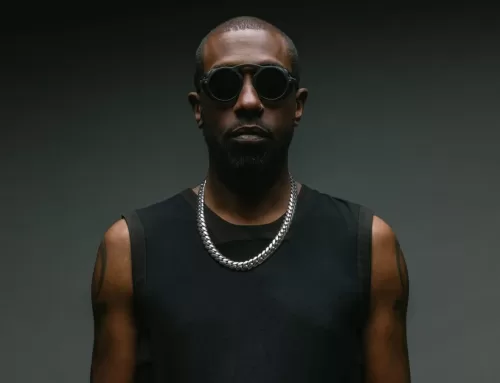
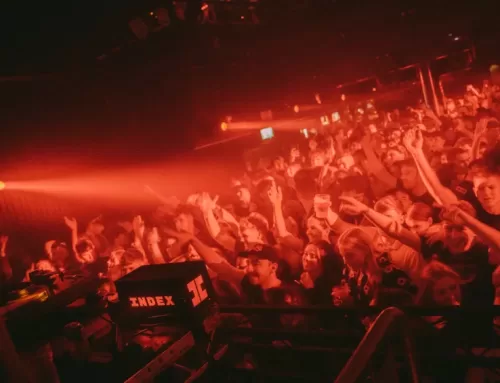
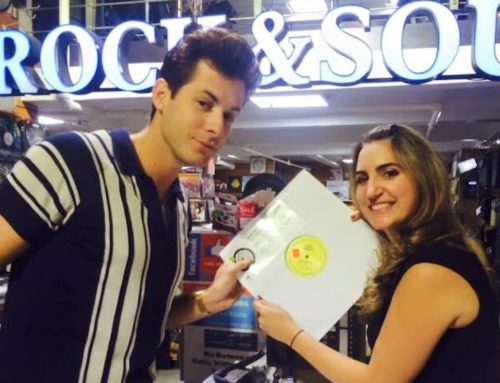
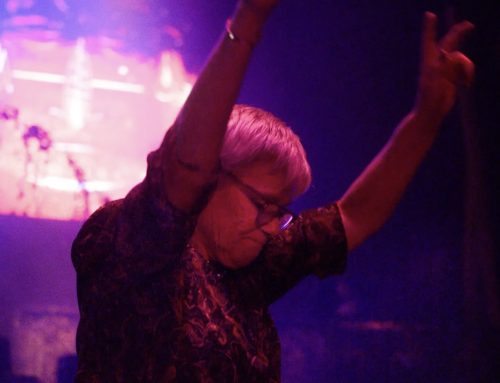

Leave A Comment
You must be logged in to post a comment.